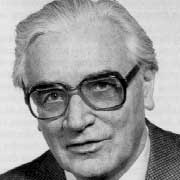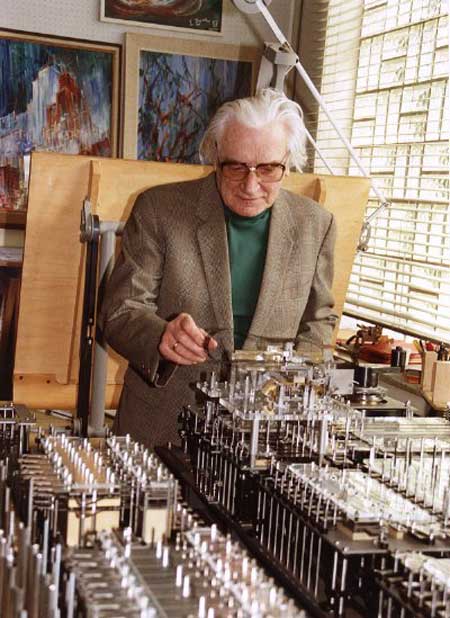 |
 |
 |
 |
 |
 |
 |
 |
| . |
Jürgen Schmidhuber's
page on |
Z3 |
 |
KONRAD ZUSE (1910-1995)
|
 |
|
|
|
1935-1938: Konrad Zuse builds Z1, world's first program-controlled
computer. Despite certain mechanical engineering problems it had all
the basic ingredients of modern machines, using the binary system and
today's standard separation of storage and control. Zuse's 1936 patent
application (Z23139/GMD Nr. 005/021) also suggests a von Neumann
architecture (re-invented in 1945) with program and data modifiable
in storage.
1941: Zuse completes Z3, world's first fully functional
programmable computer.
1945:
Zuse describes Plankalkuel, world's first higher-level programming
language, containing many standard features of today's programming
languages. FORTRAN came almost a decade later. Zuse also used Plankalkuel
to design world's first chess program.
1946:
Zuse founds world's first computer startup company:
the Zuse-Ingenieurbüro Hopferau. Venture capital
raised through ETH Zürich and an IBM option
on Zuse's patents.
|
|
|
Note: Jacquard and others built the first program-controlled
machines (punch card-based looms) in France around 1800.
Babbage (UK, around 1840) planned but was unable to build a
non-binary, decimal, programmable computer. The binary ABC (US, 1942) of
Atanasoff (of Bulgarian origin, "father of tube-based computing" - see comment on Nature 468, 760-761) and Eckert and Mauchly's decimal ENIAC
(US, 1945/46) were special purpose calculators, in principle like those
of
Schickard,
(1623), Pascal (1640) and
Leibniz
(1670), though faster (with tubes
instead of gears; today we use transistors). None of these machines was
freely programmable. Neither was
Turing
et al.'s Colossus (UK, 1943-45)
used to break the Nazi code. The first programmable machine built by
someone other than Zuse was Aiken's MARK I (US, 1944) which was still
decimal, without separation of storage and control.
|
|





|
|
In 1970, Peter's renowned atlas of world history already
listed Zuse among the century's 30 most important figures, along with
Einstein,
Gandhi, Hitler, Lenin, Roosevelt, Mao, Picasso, etc.
A collection of Zuse's writings and pictures of his
machines can be found in this
online archive.
Correspondence by J. Schmidhuber to Nature and Science on
Zuse, Schickard, Leibniz, Babbage, Atanasoff, Gödel, Turing, Aiken...:
Science, vol 1638, p 1639, June 2012.
Plus comment on response by Hodges.
Nature vol 483, p 541, 29 March 2012.
Nature 441 p 25, May 2006.
Full text.
Nature 429 p 501, June 2004.
Full text.
See also comment on Nature 468, 760-761.
|
|
 |

computer
history
speedup
page:
omega
point
by
2040?
|
|
Berlin not only was the unfortunate center of two world wars and the cold war
(1914-1989), but also the origin of
quantum physics (Planck, 1900),
general relativity (Einstein, 1915),
transistor (Lilienfeld, 1920s),
and program- controlled computer
(Zuse, 1935-1941).
|
|
|
1949: Wilkes und Renwick complete EDSAC (Cambridge, UK). Program
and data both modifiable in storage, as suggested in Zuse's 1936 patent
application, but not implemented in Z1-Z3.
1950: Despite having lost many years of work through the
destruction of Berlin, Zuse leases world's first commercial computer
(the Z4) to ETHZ, several months before the sale of the first UNIVAC.
|
|
|
1967: Zuse is the first to suggest that the universe itself
is running on a grid of computers (digital
physics); 1969 he publishes the book "Rechnender Raum" (Computing
Space); in the new millennium such
wild ideas have suddenly started to attract a lot of attention
(e.g., see the
"everything" archive).
|
|
. |

































